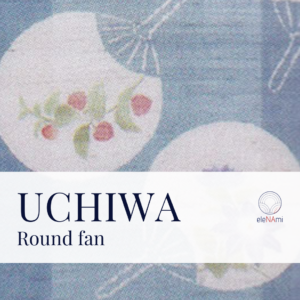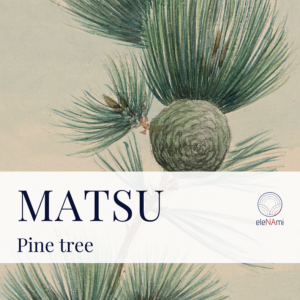History and meaning
Mikan is a kind of mandarin from Japan. The official name is “Unshiu Mikan” but you might have also heard Japanese mandarin or Satsuma orange.
So what about the word Tachibana? Citrus Tachibana is the ancient Japanese name for mikan. The progenitor of the fruit arrived in Japan around the year 700 and from that time it developed into new varieties that we can enjoy today.
The fruit appears in two ancient texts narrating the mythical of Japan: Kojiki (Record of Ancient Matters, 712) and Nihon shoki (Chronicles of Japan, 720). The Mikan is described as the fruit of immortality and longevity.

The leaves are evergreen so this might have a correlation with the idea of long lasting and healthy life.
Because of the auspicious meaning people often wear this pattern during wedding celebrations. It is also a popular New Year decoration where a mikan (in the variety called daidai) top a pile of white mochi (rice balls).
It also appears as family crests. The Tachibana family for example used the stylized image of the fruit (or flower), to represent their dynasty.
In Kyoto the crest of the famous Heian-jingu Shrine is a cherry blossom together with a tachibana. The same couple of flowers even decorate the Kyoto Imperial Palace. The first tree stands on the right of the Kyoutoare building, and the second on the left ( perspective of the emperor).
Curiosity about mikan
satsuma was the name of a province in southern Japan, now part of Kagoshima. Milan were not originally from here but instead here departed the export for abroad. The are is also famous for satsuma-imo ( a kind of “imo” , potato ) and satsuma kiriko, a glass cut traditional craft. Satsuma kiriko was made in one of the first western factories in Japan but was dismissed because of combing of the factory and finncial difficulties. The artisans spread into Tokyo (edo) and improved the Edo kiriko, Tokyo cut glass crafts. Few satsuma glasses arrived until today and their price as antique is very high. Satsuma ware
Sources:
https://japan-food.jetro.go.jp/en/feature/detail/219.html
https://www.mlit.go.jp/tagengo-db/en/R1-01601.html
Consult the complete list of Japanese patterns HERE .



